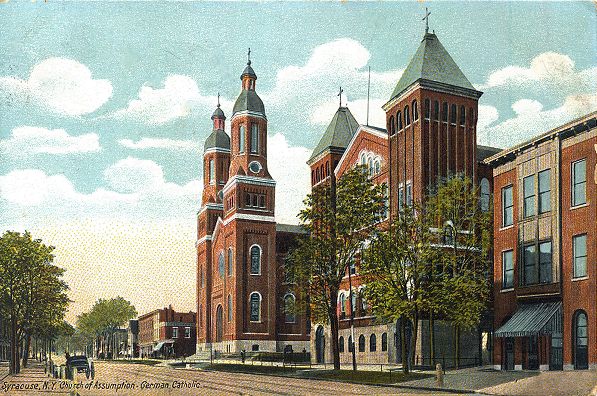|
North Salina |
 Postcard, "Church of the Assumption, German Catholic" about 1900 |
|
The Salt industry in Salina required thousands of wooden barrels, both for the processing of salt as well as for packaging to get the salt to market. In the early 1800's the route between Salina and Syracuse was named Coopers Street for the many barrel makers ("coopers") doing business along this street. By the 1820's the street's name was changed to Salina Street. It didn't become known as North Salina until South Salina was later established south of the Erie Canal. By the 1860's, following the Civil War, the German immigrant community on Salina had built it into a thriving commercial and residential area complete with paved streets and sidewalks. Most of the remaining brick row buildings were constructed during this period. These typically had shops on the first floor with the owner's apartment or rental property above. In the 1880's Italian immigrants started to arrive in Syracuse, many to build the West Shore Railroad. As the German community was dispersing into other parts of the city, the Italians moved into the North Salina area making it their own. By the early 1920's North Salina was a predominantly Italian neighborhood. Today lower North Salina constitutes the largest historic district in the city, originally containing ninety-eight properties. With state support, the city last year invested more than a million dollars on improvement for North Salina as part of its "Little Italy" project. Unfortunately, through fire and neglect, the area's historic buildings continue to disappear. |